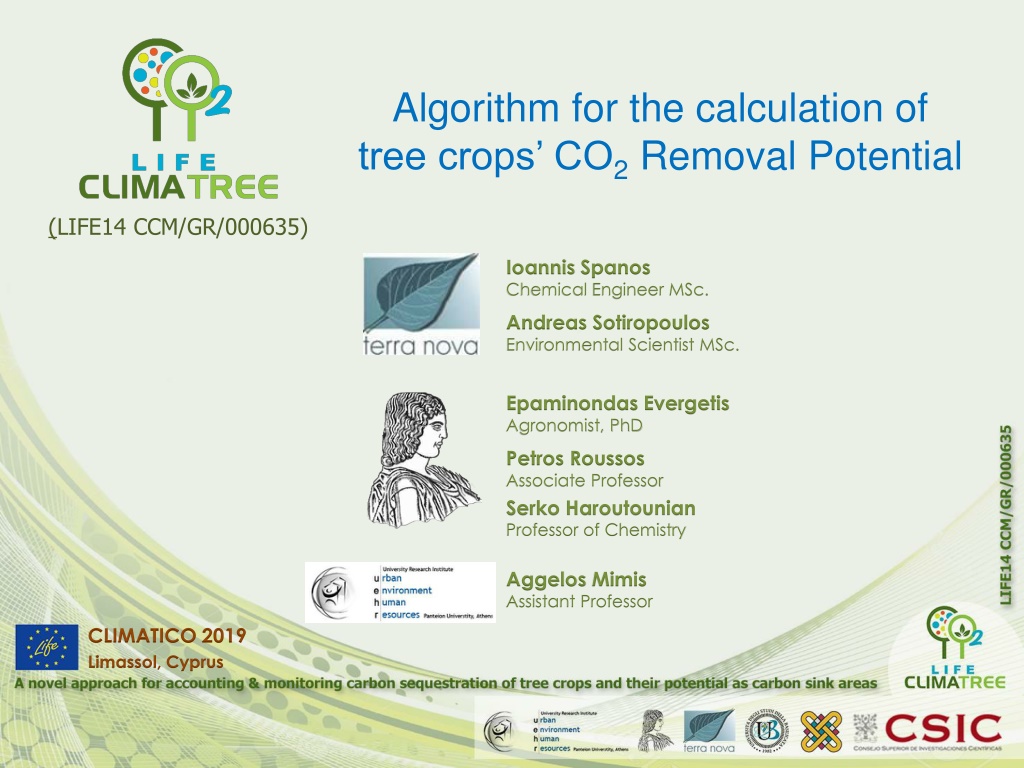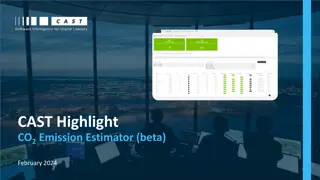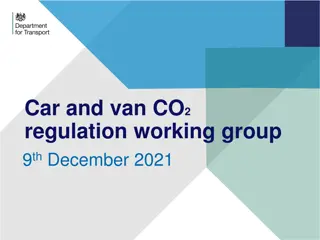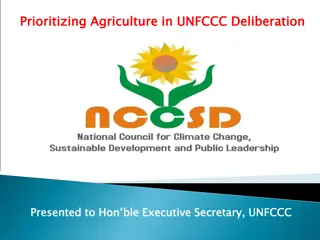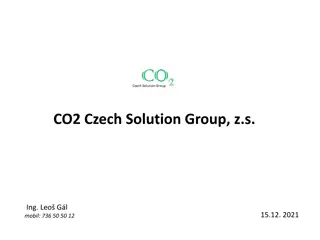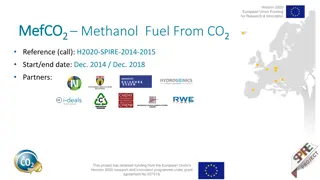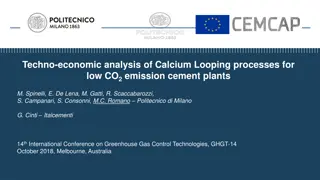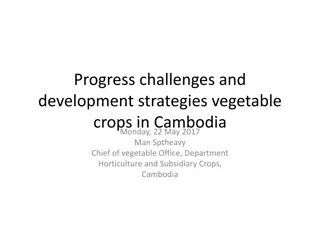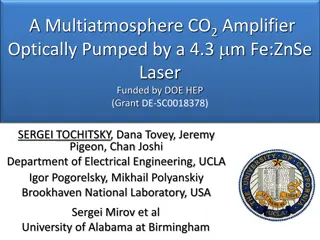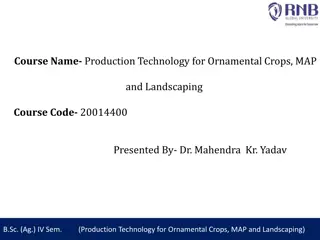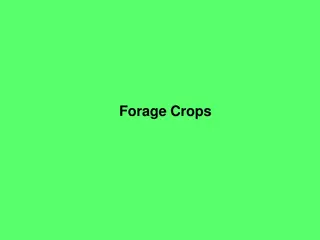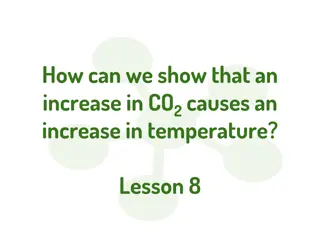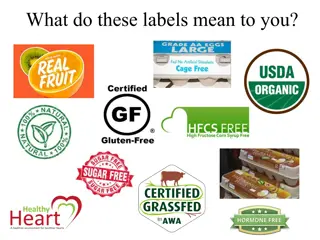Algorithm for Tree Crops CO2 Removal Potential
Algorithm for the Calculation of Tree Crops CO2 Removal Potential (LIFE14.CCM/GR/000635) focuses on efficiently determining the capacity of tree crops to remove CO2 from the atmosphere. This algorithm considers various factors such as the biological cycle of the tree, cultivation practices, and carbon balance related to CO2 emissions. It aims to aid in developing sustainable agricultural policies for climate change mitigation. The calculations are performed within a specific time period and user categories include farmers, agronomists, environmental consultants, decision/policy makers, and researchers.
Download Presentation

Please find below an Image/Link to download the presentation.
The content on the website is provided AS IS for your information and personal use only. It may not be sold, licensed, or shared on other websites without obtaining consent from the author. Download presentation by click this link. If you encounter any issues during the download, it is possible that the publisher has removed the file from their server.
E N D
Presentation Transcript
Algorithm for the calculation of tree crops CO2 Removal Potential (LIFE14 CCM/GR/000635) Ioannis Spanos Chemical Engineer MSc. Andreas Sotiropoulos Environmental Scientist MSc. Epaminondas Evergetis Agronomist, PhD Petros Roussos Associate Professor Serko Haroutounian Professor of Chemistry Aggelos Mimis Assistant Professor CLIMATICO 2019 Limassol, Cyprus
Tree crops CO2 Removal Potential Algorithm (CO2RPA) Algorithm s scope The efficient calculation of tree crops capacity to remove CO2 from atmosphere Use of the results Design of appropriate policies towards the sustainable enhancement of the agricultural sector within the context of climate change mitigation.
Algorithms design principles Algorithm is designed to calculate the balance between the mass of CO2 which is captured from atmosphere and the mass of CO2 which is emitted to atmosphere by the applied agricultural practices. Algorithm takes into account: the biological cycle of the tree, and the practices applied for its cultivation, maintenance, protection and harvesting. When referring to a tree crop , it is meant the tree itself and its surroundings as a biological unit, as well as the anthropogenic interventions in the context of its cultivation. Algorithm calculates the carbon balance which is strictly related to atmosphere s CO2 (CO2 related carbon).
Calculations boundaries Investigated subject: the tree itself and subsequently the tree crop land in terms of a specific farm or broader areas which are exclusively used for the cultivation of tree crops. Time period: 1 entire calendar year (e.g. 2018) taking into account that within a year a full productive cycle of the tree crop will be performed, while all types of the relevant agricultural works will be implemented, and thus a full cultivation cycle can be considered as a completed one.
Algorithms users Farmers Agronomists Environmental consultants Decision/ Policy makers Researchers The users are divided in 2 categories: a. those having all or most of the required data to import them in the Algorithm (these are usually the farmers) a. those not having these data, but just a general aspect of the issue (these are usually the Decision/ Policy makers). A back-end database has been developed to assist Algorithm s effective operation.
Algorithms pilot version Algorithm has been developed at pilot scale for the calculation of the CO2 Removal Potential for 5 tree species: Olive (Olea europaea) Apple (Malus sylvestris) Orange (Citrus sinensis) Peach (Prunus persica) Almond (Amygdalus communis) in 3 countries: Greece Spain Italy
Algorithms structure CO2RPA consists of 3 main sections: Biomass change of the tree Soil activity underneath the tree Agricultural practices applied TRP = RPB+ SPS EP = RPBF + RPBW + SPS (EPf + EPp + EPff&e) where: TRP: CO2 Total Removal Potential of a specific tree crop farm or a broader tree crop area RPB: CO2 Removal Potential due to biomass change of the tree SPS: CO2 Storage Potential of soil regarding the carbon of the fallen biomass EP: CO2 Emissions Potential due to the applied agricultural practices RPBF: CO2 Removal Potential due to the production of fruit biomass RPBW: CO2 Removal Potential regarding the production of new trunk, branches and roots biomass EPf: CO2 Emissions Potential due to the use of fertilizers EPp: CO2 Emissions Potential due to the use of pesticides EPff&e: CO2 Emissions Potential due to the use of fossil fuels & electricity
CO2 Removal Potential due to the production of fruit biomass RPBF = Cfx K1x Y = Cfx K1x YD x S where: RPBF: CO2 Removal Potential due to the production of fruit biomass [in tn of CO2] Cf: carbon content of fresh fruit [in tn C per tn of fresh fruit] K1: mass conversion coefficient from C to CO2 = 3.66419 Y: total yield of the farm or the broader area regarding fruit production [in tn] YD: yield density of the tree crop cultivation [in tn per ha] S: surface of the tree crop cultivation [in ha]
CO2 Removal Potential regarding the annual production of new trunk, branches and roots biomass RPBW = (JP x PD x S x ADR1x Cwx K1) + (MP x PD x S x ADR2x Cwx K1) + RPBPr where: RPBW:CO2 Removal Potential regarding the production of new trunk, branches and roots [in tn of CO2] JP: percentage of the orchard s trees that are in the Juvenile Phase [in %] MP: percentage of the orchard s trees that are in the Mature Phase [in %] PD: planting density of the tree crop cultivation [in number of trees per ha] S: surface of the tree crop cultivation [in ha] ADR1: annual development rate of tree s biomass (trunk, branches, roots) in Juvenile Phase [in tn per tree unit] ADR2: annual development rate of tree s biomass (trunk, branches, roots) in Mature Phase [in tn per tree unit] Cw: carbon content of wood = 0.475 tn C per tn of dry wood (this is an average value applicable to practically all types of wood) K1: mass conversion coefficient from C to CO2 = 3.66419 RPBPr: CO2 Removal Potential regarding the management of prunings [in tn of CO2]
CO2 Removal Potential regarding the management of prunings RPBPr value depends on the practice applied for the management of prunings: RPBPr Prunings management types left in the field burnt in the field use as a solid fuel outside the field other use different than burning -(Pr x Cwx K1) -(Pr x Cwx K1) -(Pr x Cwx K1) 0 where: RPBPr: CO2 Removal Potential regarding the management of prunings [in tn of CO2] Pr: annual quantity of prunings produced [in tn] Cw: carbon content of wood = 0.475 tn C per tn of dry wood K1: mass conversion coefficient from C to CO2 = 3.66419
CO2 Storage Potential of soil regarding the carbon of the fallen biomass SPS= Cfb x e-a x b x k x t(1) where: SPS: CO2 Storage Potential of soil regarding the carbon of the fallen biomass [in tn of CO2] Cfb: carbon content of the fallen biomass (fruits, leaves, prunings, hulls) [in tn of C] a: mean temperature of the specific area b: moisture (it depends on the clay content of soil, rainfall and pan evaporation) k: decomposition rate t: 1 since k is based on yearly decomposition rate (1) Based on a simplified version of RothC-26.3
CO2 Emissions Potential due to the applied agricultural practices EP = EPf + EPp+ EPff&e = - ((Mfx aifx CEaifx K1) + (Mpx aipx CEaipx K1) + ((MDx KD) + (MGx KG) + (MEx KE))) where: EP: CO2 Emissions Potential due to the applied agricultural practices [in tn of CO2] EPf: CO2 Emissions Potential due to the use of fertilizers [in tn of CO2] Mf: mass of fertilizer annual consumption [in tn of fertilizer] aif: fertilizer content in active ingredient (N, P2O5, K2O) [in %] CEaif: carbon equivalent of fertilizer active ingredient [in tn of C per tn of fertilizer] EPp: CO2 Emissions Potential due to the use of pesticides [in tn of CO2] Mp: mass of pesticide annual consumption [in tn of pesticide] aip: pesticide content in active ingredient [in %] CEaip: carbon equivalent of pesticide active ingredient [in tn of C per tn of fertilizer] K1: mass conversion coefficient from C to CO2 = 3.66419 EPff&e: CO2 Emissions Potential due to the use of fossil fuels & electricity [in tn of CO2] MD: annual consumption of diesel [in tn] MG: annual consumption of gasoline [in tn] ME: annual consumption of electricity [in KWh] KD: CO2 emission factor of diesel [in tn CO2 per lt of diesel] KG: CO2 emission factor of gasoline [in tn CO2 per lt of gasoline] KE: CO2 emission factor of electricity [in tn CO2 per KWh of electricity]
Results for Greece Olive Orange 297.059,57 Almond 56.388,71 TRP Analysis RPBF RPBW SPS EPf EPp EPff&e Emissions CO2 /Removed CO2 tn CO2 2.054.669,49 tn CO2 tn CO2 tn CO2 tn CO2 tn CO2 tn CO2 1.889.673,70 1.816.679,75 6.975,78 635.656,91 585.493,54 437.509,29 44,67% 55.365,08 331.438,86 878,86 37.063,12 26.560,00 27.000,11 23,38% 66.791,86 27.538,28 611,14 8.323,57 9.543,62 20.685,37 40,61% CO2 Removal Potential Indexes TRParea TRPproduct TRPtree tn CO2/hectare tn CO2/tn of fruit product tn CO2/tree 2,52 0,60 0,015 8,77 0,38 0,020 4,24 1,84 0,015
Emerging potentials by the extracted results: (A) The financial exploitation by the farmers themselves of the CO2 credits of their own tree crop farms in the context of a carbon off-setting market, could offer a series of advantages: Significant financial support to the EU agricultural sector Avoidance of currency export to third non-EU countries for purchasing CO2 credits Creation of a significant financial incentive for the farmers towards the adoption of greener agricultural practices which lead to the emission of less CO2 Development of a new market of services within EU that will provide: consultation for greening the applied agricultural practices calculation of the CO2 removal capacity of the tree crop farms certification of the calculated CO2 credits brokering of the certified CO2 credits.
Emerging potentials by the extracted results: (B) Although the participation of fruits biomass is not currently taken into account by the current official systems for the calculation of CO2 budgeting of tree crops due to its short CO2 cycle [1 to 2 years], it is apparent that the amounts of CO2 that are removed from atmosphere, even temporarily, to create the fruits biomass are considerably high. This fact reveals the importance of fruits and consequently the importance of the corresponding tree crop farms as a significant Climate Change mitigation measure. Tree crops through their fruits biomass can serve as a Climate Regulator. It can be considered as a short-term climate loan which enables the planet instead of dealing with an X1 quantity of CO2 steadily existed in the atmosphere and thus contributing to the formulation of the climate, to deal with a smaller X2 quantity of CO2 fluctuating gradually through the year from X1 to 0. Based on that, the expansion of areas covered by tree crops appears being of crucial importance.
